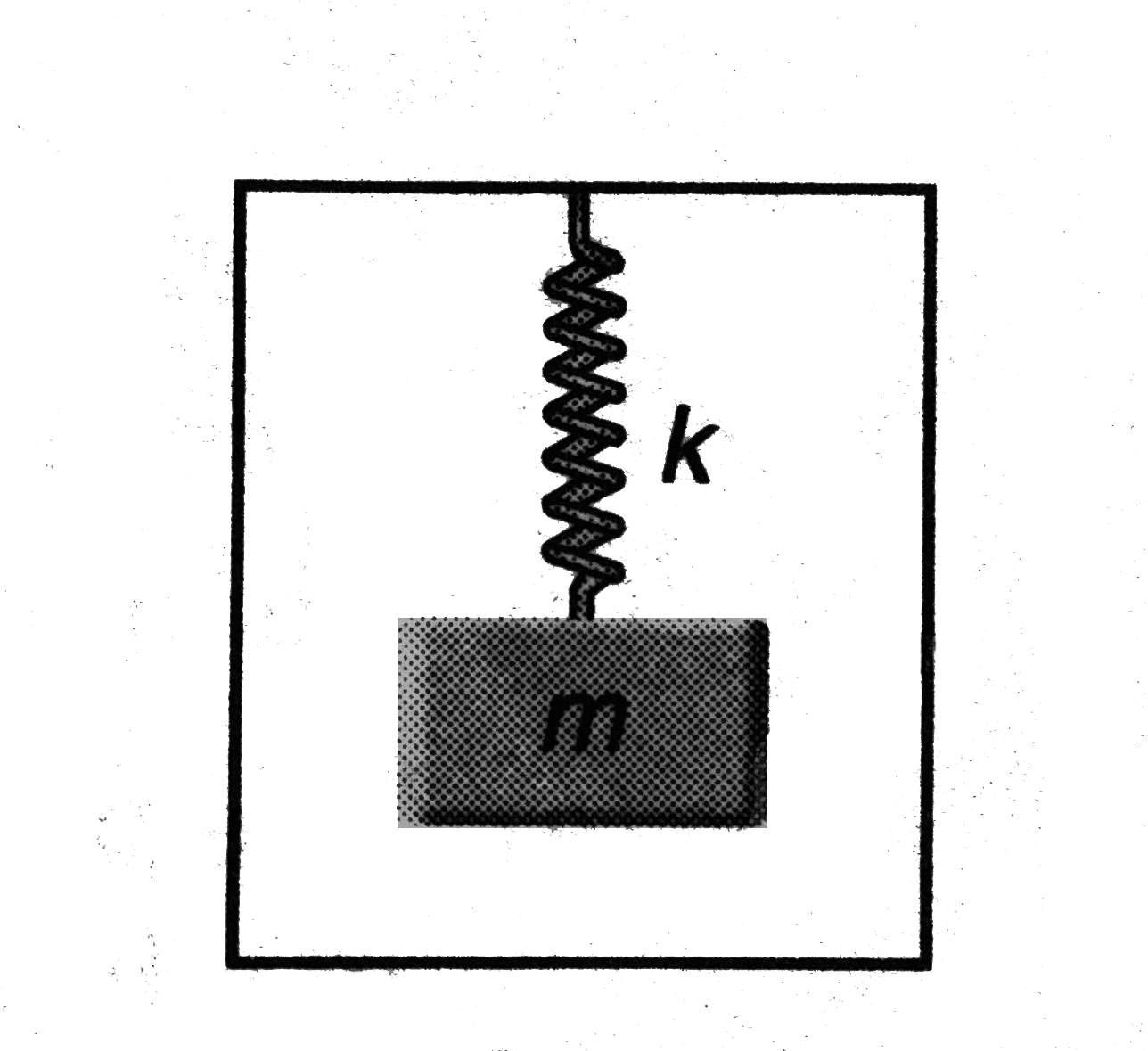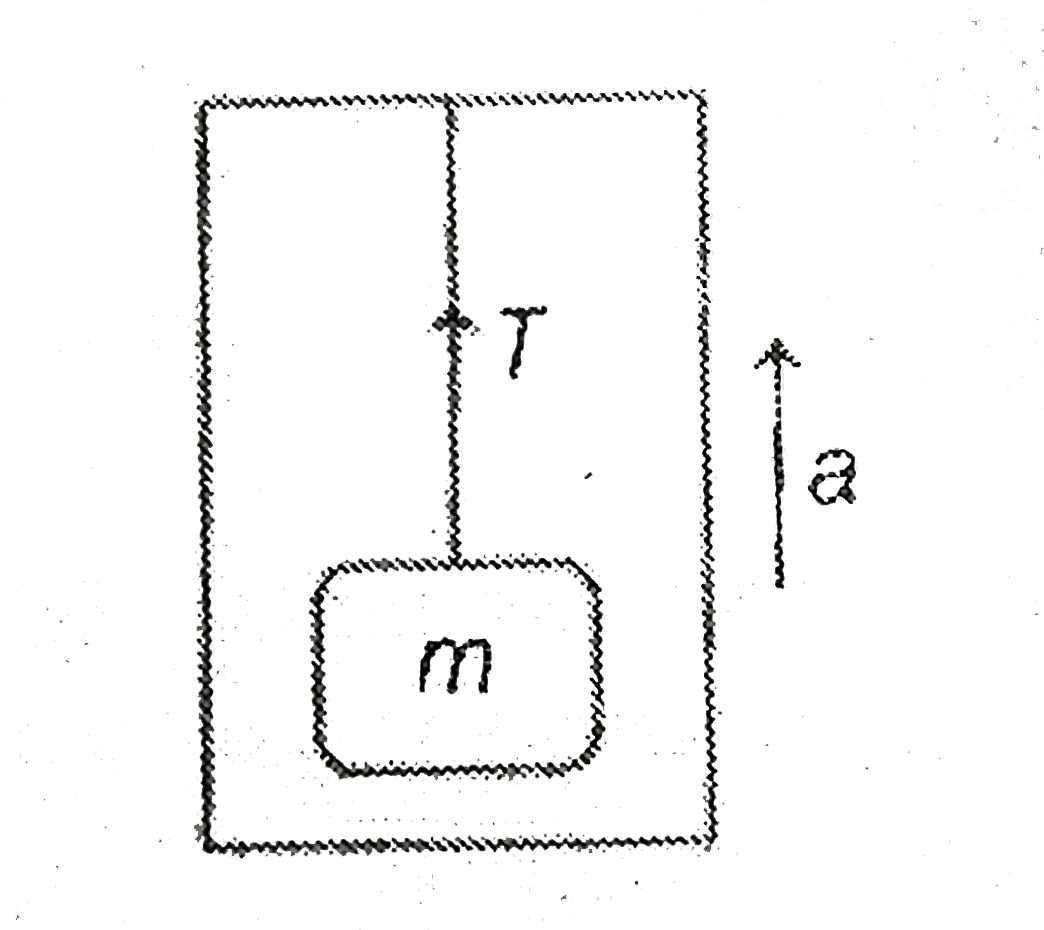You are designing an elevator for a hospital. The force exerted on a passenger by the floor of the elevator is not to exceed 1.60 times the passenger's weight. The elevator accelerates upwards with constant accelerates upwards with constant acceleration for a distance of 3.0 m and then starts to slow down. What is the maximum speed (in ms−1) of the elevator?
To solve the problem of finding the maximum speed of the elevator, we can follow these steps:
Step 1: Understand the Forces Acting on the Passenger
The forces acting on the passenger in the elevator are:
- The gravitational force (weight) acting downwards, which is mg.
- The normal force (N) exerted by the floor of the elevator acting upwards.
According to the problem, the normal force should not exceed 1.60×mg.
Step 2: Set Up the Equation for Forces
Using Newton's second law, we can express the net force acting on the passenger:
N−mg=ma
Where:
- N is the normal force,
- mg is the weight of the passenger,
- a is the acceleration of the elevator.
Step 3: Substitute the Maximum Normal Force
Since the normal force cannot exceed 1.60×mg, we can substitute this into our equation:
1.60mg−mg=ma
This simplifies to:
0.60mg=ma
Step 4: Solve for Acceleration
We can now solve for the acceleration a:
a=0.60g
Assuming g≈10m/s2:
a=0.60×10=6m/s2
Step 5: Use the Kinematic Equation to Find Maximum Speed
Now, we can use the kinematic equation to find the maximum speed v of the elevator after it has accelerated over a distance of 3.0 m. The equation is:
v2=u2+2as
Where:
- u is the initial velocity (0 m/s, since it starts from rest),
- a is the acceleration (6 m/s²),
- s is the distance (3 m).
Substituting the values:
v2=0+2×6×3
v2=36
Taking the square root of both sides:
v=√36=6m/s
Final Answer
The maximum speed of the elevator is 6m/s.
---
The forces acting on the passenger in the elevator are:
- The gravitational force (weight) acting downwards, which is mg.
- The normal force (N) exerted by the floor of the elevator acting upwards.
Using Newton's second law, we can express the net force acting on the passenger:
N−mg=ma
Where:
- N is the normal force,
- mg is the weight of the passenger,
- a is the acceleration of the elevator.
Since the normal force cannot exceed 1.60×mg, we can substitute this into our equation:
1.60mg−mg=ma
This simplifies to:
0.60mg=ma
We can now solve for the acceleration a:
a=0.60g
Assuming g≈10m/s2:
a=0.60×10=6m/s2
Now, we can use the kinematic equation to find the maximum speed v of the elevator after it has accelerated over a distance of 3.0 m. The equation is:
v2=u2+2as
Where:
- u is the initial velocity (0 m/s, since it starts from rest),
- a is the acceleration (6 m/s²),
- s is the distance (3 m).
v2=0+2×6×3
v2=36
Taking the square root of both sides:
v=√36=6m/s
The maximum speed of the elevator is 6m/s.
Topper's Solved these Questions
- BOOK - VMC MODULES ENGLISHCHAPTER - DYNAMICS OF A PARTICLEEXERCISE - LEVEL 2 ( NUMERICAL TYPE FOR JEE MAIN )16videos
DYNAMICS OF A PARTICLE
- BOOK - VMC MODULES ENGLISHCHAPTER - DYNAMICS OF A PARTICLEEXERCISE - JEE Main (Archive) Level - I29videos
DYNAMICS OF A PARTICLE
- BOOK - VMC MODULES ENGLISHCHAPTER - DYNAMICS OF A PARTICLEEXERCISE - LEVEL 175videos
DYNAMICS OF A PARTICLE
- BOOK - VMC MODULES ENGLISHCHAPTER - DC CIRCUITEXERCISE - JEE ADVANCED ARCHIVE68videos
DC CIRCUIT
- BOOK - VMC MODULES ENGLISHCHAPTER - ELECTROMAGNETIC INDUCTION & ALTERNATING CURRENTEXERCISE - IN-CHAPTER EXERCISE-G10videos
ELECTROMAGNETIC INDUCTION & ALTERNATING CURRENT
Similar Questions
Consider an elevator moving downwards with an acceleration a, the force exerted by a passenger of mass m on the floor of the elevator is :
View SolutionWhat normal force does the floor of an elevator exert on a 90 kg person if the person / elevator system accelerates upward at 1m/s2 ?
View SolutionAn elevator is moving vertically up with a acceleration a the force exerted on the floor by a passenger of mass m is
View SolutionA man of mass m is standing in an elevator moving downward with an acceleration g4. The force exerted by the bottom surface of the elevator on the man will be
View SolutionA spring of force constant 200Nm−1 has a block of mass 10 kg hanging at its one end and the other end of the spring is attached to the celling of an elevator. The elevator is rising upwards with an acceleration of g4 and the block is in equilibrium with respect to the elevator . when the acceleration of the elevator suddenly ceases , the block starts oscillating . What is the amplitude (in m) of these oscillations ?
View SolutionA man is standing on a weighing machine kept on the floor of an elevator. The ratio of measured weight of the man when elevator is at rest and when it is moving with downward acceleration a is 3 : 2. The value of a is :
View SolutionIf the elevator in shown figure is moving upwards with constant acceleration 1ms−2, tension in the string connected to block A of mass 6 kg would be ( take, g=10ms−2)
 View Solution
View SolutionA cubical block of density ρ is floating on the surface of water. Out of its height L, fraction x is submerged in water. The vessel is in an elevator accelerating upward with acceleration a. What is the fraction immersed ?
View SolutionA spring mass system is hanging from the celling of an elevator in equilibrium. The elevator suddenly starts accelerating upwards with acceleration a. Find

(a) the frequency and
(b) the amplitude of the resulting SHM.View SolutionA block of mass m is suspended by a light thread from an elevator. The elevator is accelerating upward with uniform acceleration a. The work done by tension on the block during t seconds is (u = 0)
 View Solution
View Solution

